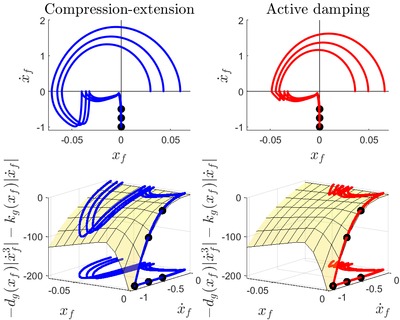
Robots capable of dynamic locomotion behaviors and high-bandwidth sensing with their limbs have a high cost of transport, especially when locomoting over highly dissipative substrates such as sand. We formulate the problem of reducing the energetic cost of locomotion by a Minitaur robot on sand, reacting to robot state variables in the inertial world frame without modeling the ground online. Using a bulk-behavior model of high-velocity intrusions into dry granular media, we simulated single jumps by a one-legged hopper using a Raibert-style compression-extension virtual leg spring. We compose this controller with a controller that added damping to the leg spring in proportion to the intrusion velocity of the robot’s foot into the simulated sand while the robot is pushing off in the second half of stance. This has the effect of both reducing the torque exerted by the motors because the added virtual “active damping” force acts in opposition to the virtual leg spring force, and reducing the transfer of energy from the robot to the sand by slowing the intrusion velocity of the foot. Varying the simulated robot’s initial conditions and the simulated ground parameters, we gained a consistent 20% energy savings by adding active damping with no cost in apex height.
For more information, see the Kod*lab website: kodlab.seas.upenn.edu

